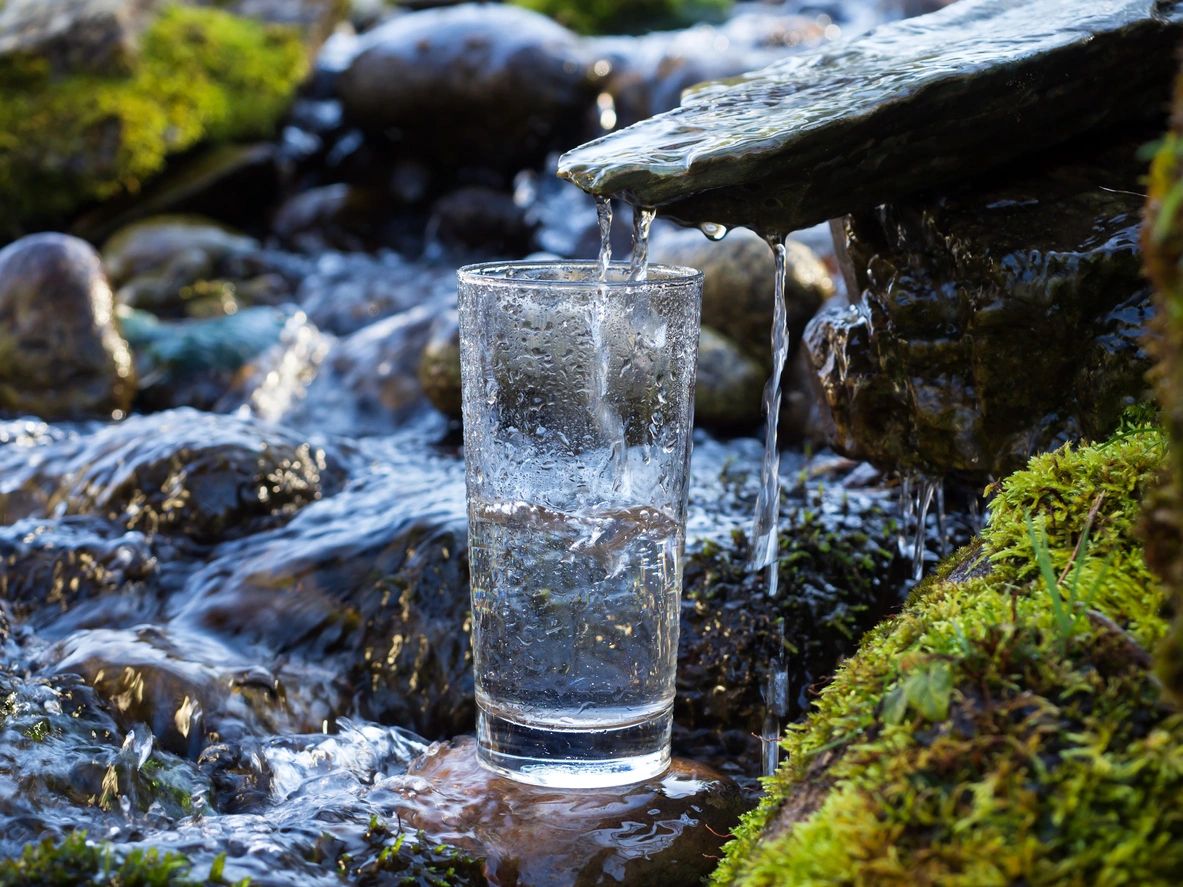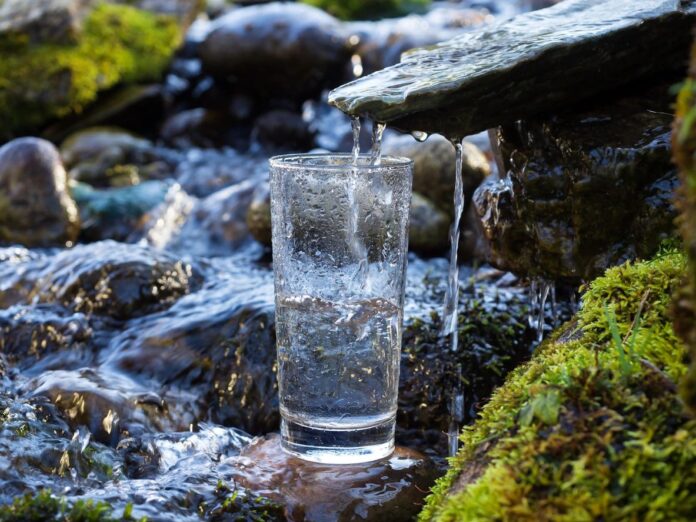Fifty years ago, the idea of paying for a bottle of water was ridiculous. It was something you’d expect to read in a science fiction novel set on Mars or somewhere with no natural surface water. Yet 50 years can see much change, and here we are, buying a product that most of us can get virtually free from the tap at home. We are also consuming precious fossil fuels to make a seemingly endless supply of disposable plastic water bottles. Drinking bottled water is just one of those convenient things many of us use. Our forefathers would have thought us foolish.
I exhibit this foolishness. We have natural spring water coming out of our spigots, yet I have half a dozen Deer Park bottles in my truck. On a daily trip, I fill a reusable 32-ounce metal water container, but that only lasts so long, so on a road trip, we carry bottled water. I also carry it as a prepper resource, and the hotter the weather, the more bottled water I carry.
The last time I went to a friend’s bee yard to work on their bees, I threw ice, a bottle of Gatorade, and six water bottles in a cooler because working in a bee suit on a sunny day will dehydrate you. Fifty years ago, we would have just drunk from the hose and ignored the faint taste of rubber. Today, I find the idea of drinking from a hose is kinda gross.
The End of Abundant Water
We consider water to be an unlimited resource when, in fact, it isn’t. Exactly how tenuous our water supply is will be increasingly driven home with every passing year.
How we handle water will have to change one day, and that day may not be too far in the future. For example, when purchased by the case, the cost of the Deer Park bottled water we drink is up about 80 percent since before the pandemic. That’s only going to get worse. Bottled water is heavy, and transporting pallets of bottled water across the country will grow more expensive every time the cost of diesel rises.
But bottled water isn’t the real problem. Humanity’s biggest future water challenge may well be finding any water suitable for drinking. Today, we tell preppers to catch and store rain water. In the future, those living in an area where you can do so will be considered lucky. They may also be considered criminals because capturing rainwater for personal use might be illegal. If the EPA had their way, it already would be.
More Drought
Although this week’s drought monitor map has far less red than last year, signifying less of the country is in extreme or exceptional drought, we can expect water shortages to grow more drastic over time. As the population grows, so does farming, the largest single use of water. Then there’s drinking water and other consumer uses, everything from watering your lawn or taking a shower to boiling your pasta or washing your clothes. If the average consumption is 100 gallons per person per day and there are 332 million people in the U.S., you can see how that adds up quickly. Quick enough that the Colorado River doesn’t have enough water in it to provide for all its users. Quick enough that the Great Salt Lake is shrinking, losing a good chunk of what made it great.
Only unusually heavy rain and high snowfall this winter, caused by unusual atmospheric rivers, provided California and much of the Rockies with enough moisture to break the drought and help refill rivers, lakes, and reservoirs. But the West needs a few years of this to break the cycle.
The local weather and the amount of rainfall are things you should consider when searching for a retreat. Too many people build off-grid homes where they have bring water in by truck. How’s that going to work after the SHTF?
Plan for the Future
If you are young enough that your retreat might have to serve you for the next fifty years, or if you are planning for the safety of future generations, take into account the importance of having an adequate water supply now and well into the future.
There can be a great deal of change in 50 years. For example, in 1973, no one thought the Great Lake would run dry or the Lake Mead would have to stop making electricity because of a lack of water. People weren’t worried that cities like Las Vegas and Phoenix had too little water. What will we face in 50 years that we cannot foresee today? You need to future-proof your retreat to face not only the expected problems of a collapse but the unexpected worst-case problems the environment, the climate, or laws about either may bring us.
If you are relocating, finally leaving the city, look for somewhere with abundant surface water and plenty of rain. You will need it, your crops or garden will need it, and any livestock you raise will need it. Plus, it’s less work to catch rain water from the sky than to haul water from the pond.
In the eastern half of the U.S., water is there for the taking; in the western states, you need to have water rights, preferably senior water rights to use water from a stream or river that runs through your land. (Of course, during a massive disruption that results in TEOTWAWKI, it’s unlikely anyone will be taking you to court over your water use, if only because there are no courts.)
The Benefits of Surface Water
When you move to a new place in the country, you can improve the soil, put up fencing, build an outbuilding, and plant an orchard and berry bushes, but you can’t do much to improve the water situation. That’s why you should make sure your retreat has at least one year-round source of surface water and plenty of rainfall.
Sure, a well is nice when you have power, but in a grid-down scenario, how do you bring that clean water to the surface? A bucket and a crank will work fine if the water level is 24 feet below the surface, but it’s another question if the water is at 240 feet, or even 540. You not only need power and pumps, you need back up power and replacement pumps, spare pressure tanks, and a stockpile of related equipment.
Multiple drip filters can be had for the cost of just one deep-well pump. You can also buy or build a ram pump to move water from a stream to your house for just a few hundred bucks.
Unless you have a solar or wind-power pump, it may be easier in a post SHTF scenario to capture, transport, and filter surface water than it is to operate a pump. While it may not be the purest, water gurgling down a creek or rushing down a river is there for the taking. This makes it an ideal fallback option for water after TEOTWAWKI. You can filter your drinking water and (unless it is highly polluted) use raw stream water for livestock, to flush toilets, and to water the garden.
Weather Concerns
While ensuring you have plentiful water, you also want to avoid a flood. I would hesitate to build anywhere that might flood, including in a 500-year flood zone. Take some other basic precautions, such as making sure no trees will damage your retreat if the wind knocks them over. A cleared area around your house will also provide you will a buffer to keep forest fires away as well as a clear field of fire should you be attacked.
Some people buy a house and expect it to be their “forever home” but end up moving just a few years later. Others buy a “starter home” and live there for 20 year or more. Never assume that your retreat will be temporary. Make your retreat the best it can be today. If you have more money and resources down the road, then can decide whether to improve what you have or move and start over, but a disaster or a collapse may not wait.









